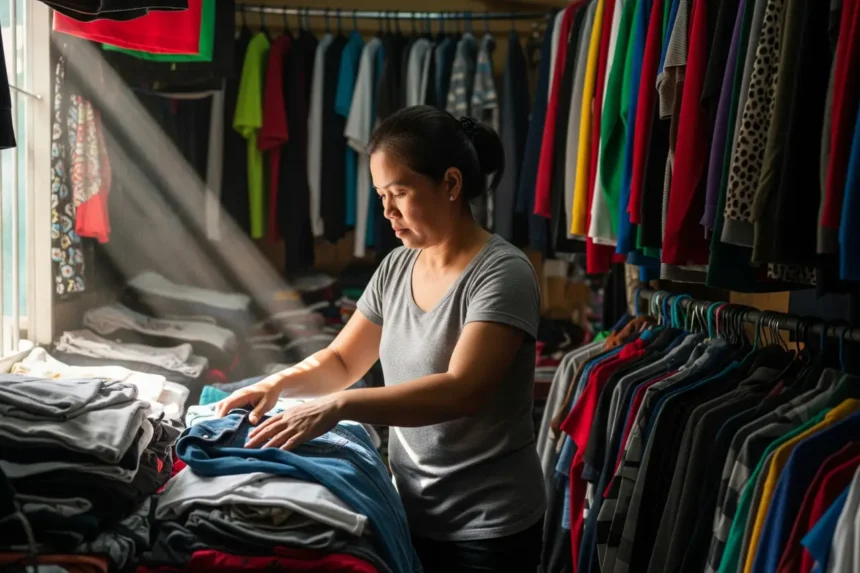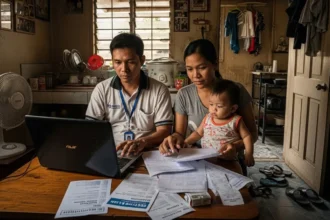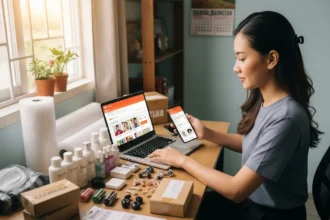Every Filipino knows the charm of ukay-ukay-rows of thrifted clothes, shoes, and bags, each with its own story. Maraming Pinoy ang nahuhumaling sa ukay not just because it’s affordable, but because it’s also a treasure hunt for unique fashion finds. But here’s the catch: while ukay-ukay is common in the Philippines, not everyone knows how to start it legally.
- 🛍️ Why Start an Ukay-Ukay Business?
- 📜 Legal Requirements to Start an Ukay-Ukay Business in the Philippines
- 🪜 How to Start an Ukay-Ukay Business Step by Step
- 💰 How Much Capital Do You Need?
- 📦 Where to Source Ukay-Ukay Items
- 📈 Tips to Make Your Ukay-Ukay Business Succeed
- ❌ Common Mistakes New Ukay Sellers Make
- 🙋♀️ FAQs About Ukay-Ukay Business in the Philippines
- 🌟 Advice for Aspiring Ukay-Ukay Entrepreneurs
I remember walking through Baguio’s night market, where ukay-ukay thrives, and thinking, “Paano kaya kung magtayo ako nito? But what about the permits?” If you’re asking the same thing, you’re not alone. This guide will walk you through the legal steps, permits, and requirements to start your own ukay-ukay business in the Philippines.
🛍️ Why Start an Ukay-Ukay Business?
The ukay-ukay business isn’t just a passing trend – it has become a staple of Filipino entrepreneurship. From small-town night markets to established stalls in city centers, second-hand fashion continues to thrive because it taps into one universal truth: Pinoys love a good bargain.
Every year, the Philippines imports tons of second-hand clothes, shoes, and accessories, much of it from countries like the U.S., Korea, and Japan. These items make their way into local ukay shops, proving that demand is not only strong but consistently growing. Whether it’s students looking for budget-friendly outfits, office workers hunting for branded finds, or fashionistas searching for vintage treasures, ukay-ukay caters to everyone.
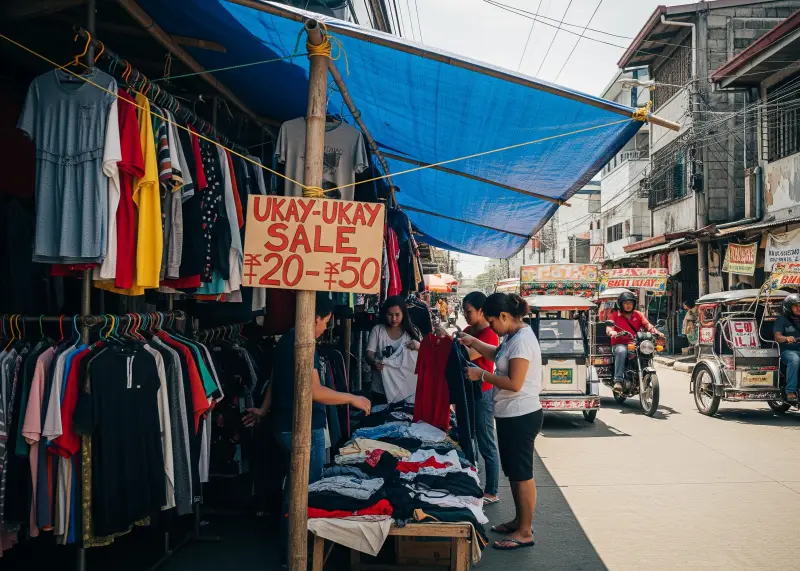
Why It Makes Sense as a Negosyo Idea
-
Affordable Capital – Compared to franchises or retail stores, starting an ukay-ukay requires a smaller initial investment. You can begin with a single bale and scale up as profits grow.
-
Steady Demand – Clothes are a necessity, and Filipinos are always on the lookout for affordable fashion. Even during economic downturns, ukay-ukay sales often stay steady because people shift from malls to thrift shops.
-
High Markup Potential – Items bought cheaply from bales can be resold at 2x–5x the price, especially branded or unique pieces. A ₱50 find can easily turn into a ₱200 sale.
-
Flexible Operations – Whether you want a small stall at the palengke, an online shop on Facebook or Shopee, or a full physical store, ukay-ukay adapts to your available budget and location.
No wonder ukay-ukay remains a go-to negosyo idea for Filipinos who want to start small but dream big. It’s an accessible business that rewards creativity, patience, and the Pinoy talent for diskarte.
📜 Legal Requirements to Start an Ukay-Ukay Business in the Philippines
Here’s the reality: under Republic Act 4653, the commercial importation of used clothing is technically banned to protect public health and local industries. But over time, the ukay-ukay trade has become part of Filipino culture and livelihood. Today, many entrepreneurs still operate legally by complying with local business permits and sourcing inventory from accredited local suppliers who have already handled the importation process.
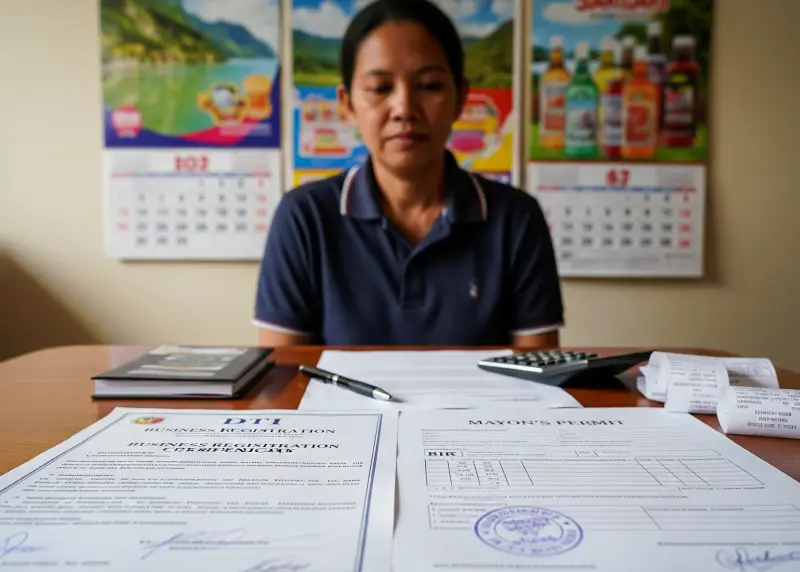
If you want to run your own ukay-ukay shop, here are the permits and registrations you’ll need:
-
Barangay Clearance – Proof that your shop is permitted within your barangay. This is usually the first step before applying for a business permit.
-
Business Permit (Mayor’s Permit) – Issued by your city or municipality. This certifies that your business can operate in the area and is compliant with local ordinances.
-
DTI Registration – For sole proprietors. If you’re registering as a partnership or corporation, go through the SEC (Securities and Exchange Commission) instead.
-
BIR Registration – Required so you can issue official receipts and pay proper business taxes.
-
Sanitary Permit – Since ukay items are second-hand, LGUs often require a health or sanitation clearance to ensure your shop is hygienic and safe for customers.
👉 Pro Tip: Always get your stock from legit local suppliers who have already cleared the goods with customs. This way, you avoid legal headaches and ensure your products pass basic health standards.
Following these steps won’t just keep your shop running smoothly – it also builds customer trust, because buyers know you’re operating aboveboard.
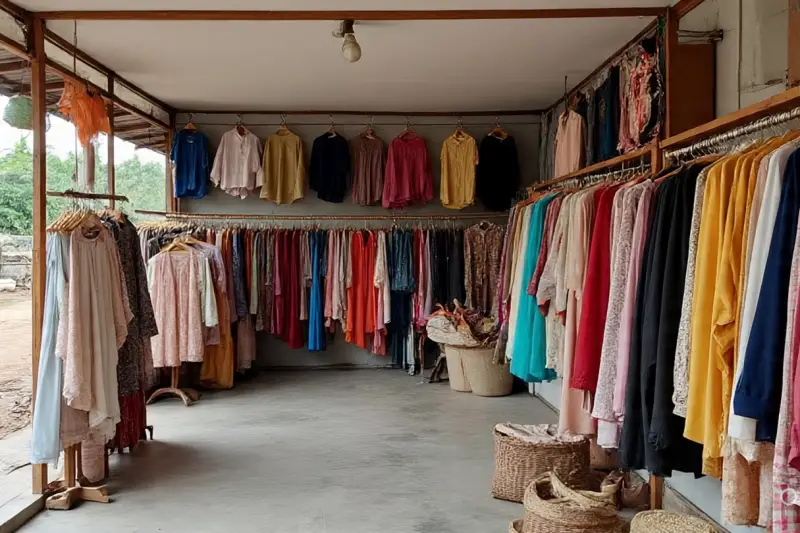
🪜 How to Start an Ukay-Ukay Business Step by Step
Starting your own ukay-ukay might sound intimidating at first-ang dami kasing permits at proseso-but once you break it down, it’s really doable. Think of it like sorting through a bale: take it piece by piece until you find the gem. Here’s a simple flow many Pinoy entrepreneurs follow:
Step 1 – Decide on your business type and name
First, think about how you’ll register. If it’s just you, a sole proprietorship under DTI is enough. If you’re starting with family or partners, go for SEC registration. Prepare 3–5 business names, para may backup in case your first choice is taken.
Step 2 – Register your name with DTI or SEC
This makes your shop official. Once you have your DTI/SEC Certificate, keep it safe-lahat ng susunod na permits will ask for it.
Step 3 – Secure your location
Whether it’s a rented stall near the palengke or a small space in front of your house, have proof of lease or a landowner’s consent. Location matters a lot in ukay-kailangan may tao, may suki.
Step 4 – Get a Barangay Clearance
This is your first local permit. Go to your barangay hall with your DTI papers, valid IDs, and lease contract. Barangay officials will check if your business is allowed in the area.
Step 5 – Apply for a Mayor’s/Business Permit
At the City or Municipal Hall, submit your documents plus the Barangay Clearance. Expect a little ikot for clearances like:
-
Fire Safety Inspection Certificate (BFP)
-
Sanitary Permit (super important since you’re handling used clothing)
-
Environmental or Solid Waste Clearance (depends on your LGU)
-
Signage Permit (if you’ll hang a tarp or store sign)
Step 6 – Register with BIR
This step makes your business truly official. Get your TIN, register your books, and apply for the Authority to Print Receipts or a POS machine. From here on, you can issue receipts-big plus for credibility and required by law.
Step 7 – Check for extra LGU requirements
Some LGUs may ask your staff to get Health Certificates since ukay involves second-hand goods. Don’t worry, this is usually just a quick checkup at the city health office.
Step 8 – Source your inventory from legit suppliers
Skip the shady “backdoor” imports. Buy from trusted wholesalers in Caloocan, Baclaran, Baguio, or Cebu. Some suppliers specialize in branded or sorted bales. Always inspect your bale-masakit sa bulsa pag puro sira ang nakuha mo.
Step 9 – Set up your shop
Invest in hangers, racks, and a steamer. Wash or freshen up clothes before selling, arrange by category, and price them clearly. A clean and well-arranged store makes customers stay longer.
Step 10 – Start selling, offline and online
Finally, open your doors and also bring your business online. Post finds on Facebook Marketplace, TikTok, and Shopee. Offer promos like “₱50 rack” or “Buy 1 Take 1.” Be honest about condition-transparency builds loyal suki.
✨ Pro tip: Don’t stress if the paperwork feels mabigat. Think of it as an investment in peace of mind. Once you’re legal, you can focus on growing your shop without fear of penalties or shutdowns.
💰 How Much Capital Do You Need?
Capital depends on your scale, but here’s a breakdown for a small stall:
Table 1: Sample Startup Costs for Ukay-Ukay Business
| Expense | Estimated Cost (₱) | Notes |
|---|---|---|
| Initial Stocks (1 bale) | ₱8,000 – ₱12,000 | Clothes/shoes from local supplier |
| Rent (stall or small shop) | ₱5,000 – ₱15,000 | Depends on location |
| Business Permits & Registration | ₱5,000 – ₱8,000 | One-time setup |
| Store Fixtures (racks, hangers, shelves) | ₱5,000 – ₱10,000 | Basic setup |
| Marketing / Signage | ₱3,000 – ₱5,000 | Flyers, social media ads |
| Miscellaneous | ₱3,000 – ₱5,000 | Utilities, supplies |
👉 Estimated Total: ₱30,000 – ₱55,000 for a small stall.
For larger shops, expect around ₱100K–₱200K investment.
📦 Where to Source Ukay-Ukay Items
In the ukay-ukay business, your supplier is everything. The success of your shop depends on whether you can consistently offer quality pieces at affordable prices. Since direct importation is regulated, most small business owners rely on local wholesalers and distributors who have already handled the importation process.
Here are the most common sources:
-
Local Wholesale Suppliers – Major hubs include Caloocan, Baclaran, Baguio, and Cebu, where suppliers offer bales (bundles of clothing) sorted by type or mixed. Some even allow small-volume purchases for beginners.
-
Accredited Bale Distributors – These suppliers specialize in sorting items by category: branded clothes, jackets, denim, shoes, or children’s wear. This makes it easier to match your target market.
-
Surplus Shops and Bulk Resellers – Some surplus stores sell their extra stocks in bulk to smaller ukay businesses. It’s a good option if you don’t want to commit to a full bale right away.
👉 Pro Tip: Always inspect the bale before buying. Some suppliers allow you to peek inside or check sample items. This is crucial – nothing hurts more than opening a bale only to find damaged, outdated, or unsellable clothes. Experienced ukay sellers will tell you: a good bale can double your profit, but a bad one can wipe out your capital.
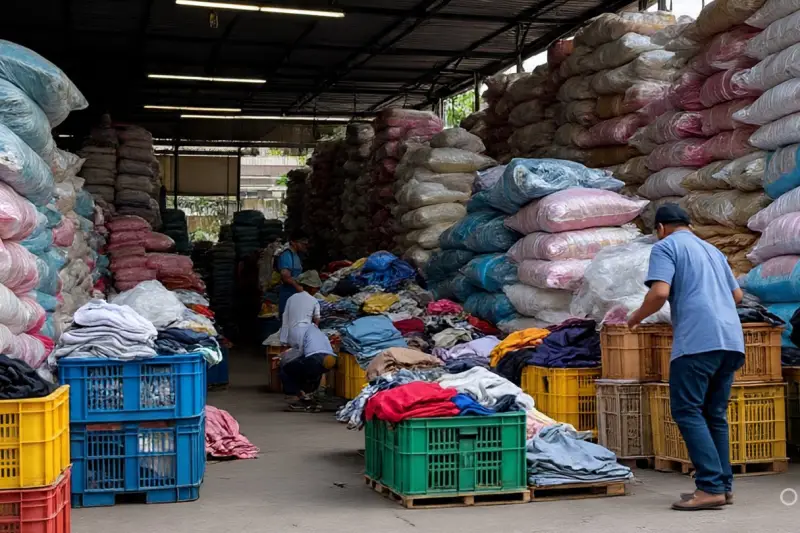
📈 Tips to Make Your Ukay-Ukay Business Succeed
Starting your ukay-ukay shop legally is just the beginning. To actually grow and stand out from dozens of other thrift stores, you’ll need a mix of good business strategy, customer service, and creativity. Here are tried-and-tested tips to make your venture thrive:
-
Choose the Right Location – Ukay thrives in areas with heavy foot traffic like near palengkes, terminals, universities, and barangay centers. If rent is too high in prime spots, consider a small stall first and expand later. Online selling can also complement your physical shop.
-
Sort & Present Items Well – First impressions matter. Wash, steam, or iron clothes before displaying. Arrange by category (men’s, women’s, kids, jackets, shoes) to make shopping easier. Even budget-conscious buyers love a store that feels clean and organized.
-
Leverage Social Media – Platforms like Facebook Marketplace, TikTok, and Shopee are goldmines for ukay sellers. Post clear photos, try live selling, and use catchy captions to draw in customers. A single viral video can empty your rack overnight.
-
Offer Promos & Discounts – Pinoys love a bargain. Simple promos like “Buy 1 Take 1,” “₱50 rack,” or “Happy Hour Sale” can attract more walk-ins and keep your inventory moving. Seasonal clearances also help avoid dead stock.
-
Build Community Trust – Word of mouth is powerful. Be honest about your products – if it’s branded, say so; if it has minor damage, mention it. Customers appreciate transparency and will keep coming back if they know you’re fair.
Running a successful ukay-ukay isn’t just about selling cheap clothes – it’s about creating a fun, reliable, and trustworthy shopping experience that makes customers return again and again.
❌ Common Mistakes New Ukay Sellers Make
Like any negosyo, ukay-ukay comes with its challenges. Many beginners rush into it without preparation, which often leads to wasted capital. Here are the most common mistakes you should watch out for:
-
Buying Without Inspecting Bales – Some sellers jump on the cheapest bale deals without checking quality. A bad bale full of damaged clothes can eat up your capital fast. Always ask for samples or deal with trusted suppliers.
-
Poor Hygiene and Presentation – Ukay has a stigma of being “madumi” if not cleaned well. Selling items with a strong storage smell or visible stains will turn off buyers. Wash, steam, or at least freshen items before display.
-
Wrong Location Choice – Even if your stock is great, a hidden spot with little foot traffic will kill your sales. Avoid setting up in areas where customers rarely pass or where competition is already too heavy.
-
No Online Presence – Many newbies rely only on walk-in customers. In today’s market, not selling on Facebook, TikTok, or Shopee means missing out on thousands of potential buyers.
-
Overpricing Items – Some sellers get greedy when they find branded or vintage pieces. While you can price premium items higher, remember ukay’s main charm is affordability. Balance fair pricing with profit.
-
Ignoring Customer Trust – Mislabeling items as “authentic” or hiding damages might earn quick money, but it kills long-term credibility. Honest sellers build loyal buyers who return again and again.
The bottom line? Success in ukay-ukay isn’t just about finding cheap stock. It’s about quality, presentation, location, and trust. Avoid these mistakes, and you’ll have a much smoother path to profit.
🙋♀️ FAQs About Ukay-Ukay Business in the Philippines
1. Is ukay-ukay legal in the Philippines?
Importation of used clothing is restricted under Republic Act 4653, but selling through local accredited suppliers is legal as long as you secure the proper permits (barangay, business permit, DTI/SEC, and BIR).
2. How much profit can I earn from ukay-ukay?
A single bale worth around ₱10,000 can yield ₱25,000–₱40,000 when sold retail, depending on quality and location. Some premium bales with branded clothes can bring in even higher returns.
3. Do I need to pay taxes for an ukay-ukay shop?
Yes. Once registered with the BIR, you are required to issue official receipts and pay taxes. This also adds credibility to your business.
4. Can I sell ukay-ukay online?
Yes! Platforms like Facebook Marketplace, TikTok Live, and Shopee are popular for online thrift reselling. But if you treat it as a business, you still need DTI/BIR registration to operate legally.
5. What’s the most profitable ukay-ukay item?
Branded or unique pieces such as jackets, jeans, dresses, and sneakers tend to sell faster and at higher markups. Kids’ clothes and trendy tops are also steady sellers.
6. How much capital do I need to start?
You can start small with ₱10,000–₱20,000 for one bale and basic setup. Bigger shops or stalls may require ₱50,000–₱100,000 depending on rent and inventory size.
7. Do I need a physical shop to start?
Not necessarily. Many beginners start with online selling or weekend pop-up stalls before investing in a full physical store. This helps test the market with lower risk.
8. How do I make sure my items sell fast?
Presentation is key. Wash or steam clothes, sort them by category, and display them neatly. Promos like “₱50 rack” or “Buy 1 Take 1” also attract bargain hunters.
9. Where do ukay-ukay sellers usually source stock?
From local wholesalers and bale distributors in areas like Caloocan, Baclaran, Baguio, and Cebu. Always check suppliers’ reputation and try to inspect bales before buying.
10. What’s the biggest challenge in running an ukay-ukay business?
Competition is tough, and quality of stock can be hit or miss. The key is building trust with customers, offering fair prices, and maintaining good supplier relationships so you always have fresh, sellable items.
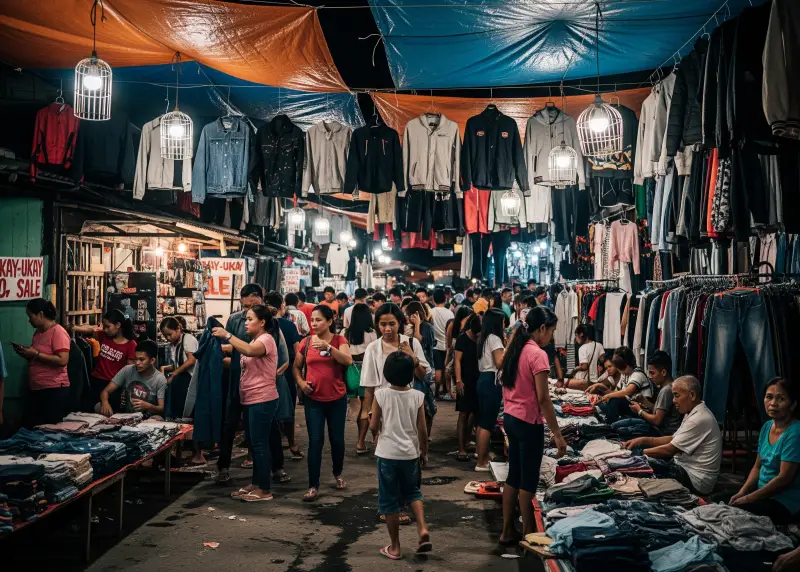
🌟 Advice for Aspiring Ukay-Ukay Entrepreneurs
Starting an ukay-ukay business in the Philippines may feel daunting at first, especially with the permits, sourcing challenges, and stiff competition. But if there’s one thing Pinoys have proven time and again, it’s that diskarte and tiyaga can turn even the simplest idea into a sustainable negosyo.
Thrift shopping will always have a special place in Filipino culture. It’s affordable, practical, eco-friendly, and fun – every customer walks in hoping to score a gem, and every seller has the chance to make that discovery possible. If you run your shop with honesty, treat your customers fairly, and keep your stall clean and welcoming, you won’t just sell clothes – you’ll build a loyal community of suki who will keep coming back.
Of course, success won’t come overnight. Like digging through a bale of clothes, minsan kailangan mong maghalungkat bago mo makita ang tunay na “treasure.” Start small, learn the ropes, adjust your strategy, and grow steadily. With consistency, patience, and a little creativity, your humble ukay stall might just be the start of a bigger business journey.
And who knows? Someday, when you look back, you might realize that your very first bale was the first step toward your entrepreneurial breakthrough.



